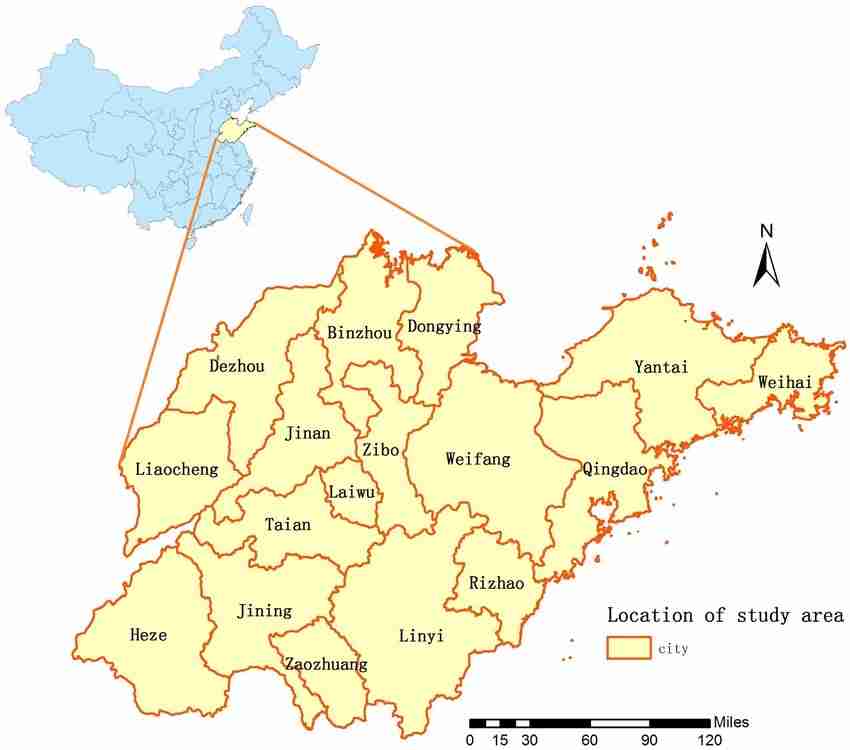The beauty of China is that there is a lot to learn from it. A long history of its civilization, and rich culture filled with symbolism and meaning. Every province in China has something special to offer and contributes a lot to what makes China what it is today. They each have their history, traditions, cuisines, and sometimes their own beliefs.
Among China’s hidden gems, however, is Shandong. Given that it is between Shanghai and Beijing, it’s very easy for most tourists to overlook this coastal province. Shandong, however, played an important role in China’s history, given it was the mouth of the great and most important river in the country, the Yellow River. As such, many of the great battles talked about today took place in Shandong. Also, the majority of Chinese religions and philosophies came from this province.
There are many reasons to want to visit Shandong. It is said to be the home of Mount Tai, the most celebrated and climbed mountain in China. It is also where, Confucius, one of the greatest and most influential philosophers and thinkers, came from. For those of you, planning on visiting this magnificent province, this post is an overview of all the important information you need to know about Shandong. We’ll cover everything from its history, geography, and cuisine.
Shandong Province History.

Nicknamed QiLu after the two major states of the Qi and Lu, Shandong’s existed as far back as the Warring period and even earlier than that. In the pre-historic period, for about a millennia, Shandong was home to many successive Neolithic cultures starting from Houli culture, followed by Beixin, then Dawenkou, Longshan, and finally Yueshi culture. Longshan, which meant Dragon Mountain, was the most recognized culture during the late Neolithic era.
During the period of Ancient China, the Shang and Zhou dynasties had a varying degree of power over the western part of the province at the time. The eastern part of Shandong in that period was inhabited by barbarians called the Dongyi people. The state of Qi, however, managed to conquer the State of Lai that was ruled by the Dongyi and brought them under Chinese rule. This was during the Spring-Autumn and Warring period when regional states divided and became increasingly powerful. The States Qi and Lu were a part of Shandong. While Qi was known for its significant power, Lu was known to be the home of the revered Chinese philosopher Confucius. The state of Lu was, however, not as powerful as Qi, given its small size. It wasn’t long before it succumbed and became a part of the larger Chu State.
In the initial stages of the Imperial China era, the Qin dynasty joined all the states including the then Shandong to form one Chinese state. During the Han dynasty that followed, the state was divided into several commanderies that were governed by the two regions that form Shandong today: Yanzhou to the south and Qingzhou to the north. When China got divided again during the Three Kingdoms period, Shandong came under the rule of Cao Wei, who was in charge of the northern part of China. The centuries following the end of the Jin dynasty, Shandong came under the rule of many different people, until the Northern-Southern period when it was a part of the Northern dynasties. When the Tang dynasty started its reign, Shandong was ruled under one of the political divisions called the Henan circuit. Later on, during the Five Dynasties and Ten Kingdoms period, Shandong became one of the Five dynasties. After the fall of the Song dynasty, in 1142, was the first time the province was named Shandong. It was governed at the time as East and West Shandong circuits.
Towards the end of the Imperial era, during the Ming dynasty, when China was expanding, Shandong gained the borders it has today. In the 19th century when China was exposed to foreign Western influence, Shandong was one of the provinces most affected. As a result, Germany took over Qingdao in 1897 and Britain took over Weihai in 1898. By 1899, Germany had full control over the Shandong peninsula. While during the period of Germany’s rule over the province, Shandong developed in terms of infrastructure like electricity, housing, and sewer systems, it also witnessed and suffered many great battles. The Boxer Rebellion, for example, took place in Shandong in 1898. Japan seized control over the province during the First World War, which led to the Sino-Japanese wars. The May Fourth Movement that happened in 1919 also took place in Shandong.
In short, Shandong’s history is filled with many turmoil and revolutions. It wasn’t until 1949 when Shandong was finally back under the control of the People’s Republic of China. During this time, is when the province, especially the eastern part, significantly developed economically and is today among the richest provinces in the country.
Where Is Shandong China Located?

The name Shandong means Eastern Mountain, where the word Shan means Mountain, and the word Dong translates to East. It was named so because of its location, which is to the East of the Taihang Mountains. The land covered by the province, starts from the eastern side of the Northern plain, just at the lower reaches of the Yellow River. From there it extends all the way to the sea to form the Shandong peninsula. To the north, the province is bordered by the Bohai Sea, to the south is Jiangsu, Hebei borders it to its northwest, and the Yellow Sea to its southeast. At some point, between Jiangsu and Henan, the province is also slightly bordered by Anhui.
The majority of the province forms part of the North China plain, that is the west, northwest, and southwest regions. The central part of Shandong is mostly mountainous, with the prominent mountain there being Mount Tai. The east region starts hilly and transitions into a rocky coastline of about 3,000km as it extends into the sea. The coastline is made up of several islands, cliffs, and bays, the major bay being Laizhou bay. The province also has some lakes, the largest one being Weishan Lake. Jade Emperor Peak is considered the highest part of the province with an altitude of 5,069ft above sea level.
The climate in Shandong is temperate, between humid continental and humid subtropical zones. It goes through four distinct seasons, including cold and dry winters and hot and rainy summers. Due to monsoonal influences, the majority of the precipitation experienced in the province every year occurs in Summer. The lowest average temperature is usually between -5-1 degrees Celsius, which is around January and the highest is between 24-28 degrees Celsius experienced in July.
How Many Cities Are in Shandong Province?

Shandong is made up of about 14 prefectural cities, that are cultural and historical. The following however are some of the major cities in the province:
Jinan – this is the capital and second-largest city in Shandong. It is also nicknamed the City of Springs since its home to 72 springs with the most popular being Baotu. It’s considered to be among the first three software cities. Economically, its focus is on ICT, Logistics, Healthcare, water management, and machinery.
Yantai – this coastal city is located at the center of the Shandong Peninsula and is considered the largest industrial city in the province. Its main exports are agricultural products including vegetables and apples. The city is also called Fairyland on earth or the City of Wine. This is because it is home to many vineyards including the largest wine producer in the country, Changyu Wines.
Qingdao – this is the largest and most well-known city in the province. The majority consider it to be the most livable city in the country with many parks, green spaces, beaches, and museums to visit. It is also where you go if you want to visit a German brewery in China.
Weifang – this city is located in the central part of the province with a population of 9.35 million. It is considered China’s vegetable city, given that agriculture, as well as food and beverage processing, are its main industrial sectors.
What Is Shandong Cuisine?

In Chinese, Shandong cuisine is referred to as Lu Cuisine or Lu Cai. It is among the 8 main cuisines in China and among the four great traditions of the country. The cuisine originated from Zibo and of all the cuisines it’s the most original with the longest history. It’s mostly famous in Shandong and the majority of North China.
The cuisine is mainly characterized by seafood because given its location fish are abundant. It however does use other ingredients as well including small grains like millet, oat, barley, and wheat. Its staple vegetables like potatoes, onions, tomatoes, mushrooms, cabbages, and eggplants are also included in the dishes.
As for flavor, the dishes are mainly umami, moderately salty, sweet, and sour. The chefs of this cuisine focus on the original taste of the ingredients and so uses light seasonings like garlic, scallions, and ginger. The cooking and cutting techniques are vast and most complicated. The main cooking methods include braising, flash-frying, or crisp-frying with syrup. The most popular dishes from this cuisine are the sweet and sour carp, braised prawns in oil, and braised sea cucumber with scallion.
What Is Shandong Famous For?
Despite being less known by western tourists, Shandong is a beautiful place to visit. The following are the main things the province is known for:
Its hospitality.
The people in Shandong are said to be friendly and welcoming. This has been the case since the ancient period of China. Regardless of whatever city you choose to visit in the province, you will feel equally welcome.
It’s rich history and culture.
If you’re a lover of history and culture, then Shandong is a great place to visit. There is a lot to learn from its long history including the German influence on the province. The province is also considered the birthplace of Chinese civilization, given it is where many of the main Chinese philosophies and religions like Buddhism originated from. The numerous historical and ancient sites for you to visit will make sure you are never bored in the province.
It is natural beautiful sceneries.
The coastal province is made up of many beautiful beaches lakes and springs. There are also magnificent mountains including the great Mount Tai and captivating landscapes. You can hike the mountains and enjoy beautiful sunsets and sunrises. Bask in the sun on one of the soft and sandy beaches or discover the many springs in the province.
It’s colorful festivals and fabulous food.
Another reason to love Shandong is that it’s home to many great annual festivals and events. Some of the main ones include Weifang Kite Festival, Qingdao International Beer Festival and Sailing Week, the International Mount Tai Climbing Festival, and the International Confucius Cultural festival. Aside from that you also get to enjoy great authentic local delicacies from one of the greatest cuisines in China.
Conclusion.
Shandong is not only culturally and historically important in China, it is also a major commercial hub in the country. There is a lot to love about the province, from its beautiful scenery to its delicious food and rich history. There is so much to learn from the province, and many places one can visit. Shandong is, therefore, a worthwhile place to visit when in China, especially during one of its many festivals.